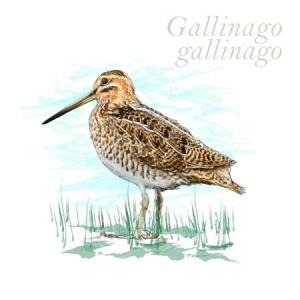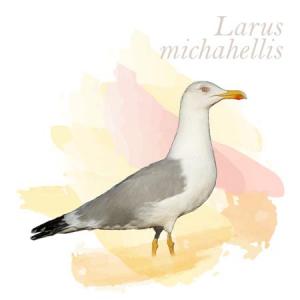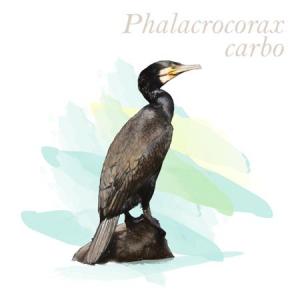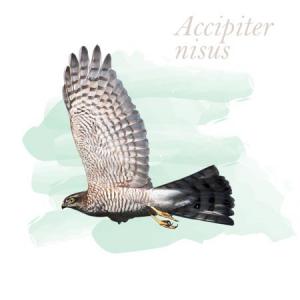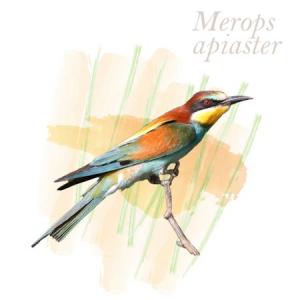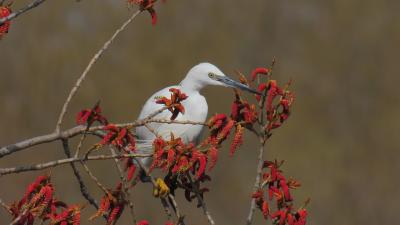The route begins and ends in the parking area for cars and buses located in the peripheral protection zone of the reserve. At this point we find an information panel with data regarding the reserve, as well as a fountain with drinking water. We start the route heading along the path on the left towards the "Mirador de los Patos", from where we will have a first view of the reserve, and of "a mother": a meander disconnected from the river current with retained water and less speed than the main channel of the river, which serves as an important refuge for fauna, becoming an important part of this valuable wetland. At this point, we must take the path that goes to the right, an old river retaining structure that takes us parallel to its course and where we can begin to enjoy the rich biodiversity of this place, having the river on our left, and riparian vegetation with various poplar plantations on the right. Once we reach the crossroads, we must continue straight on, here the river widens and we will be able to have a broader view of the riverbed, as well as appreciate the transformation of the floodplain, now used as a growing area for fruit trees due to its fertile land. The path continues along the old meander of the river, approaching the riverbank forest, as well as the earth slope excavated by the river itself. This escarpment accompanies us for more than 1 kilometer until we reach a final crossroads where the path on the left allows us to return to the exit parking.
Technical Data
The path of this circular route of no more than 4 kilometers takes us into the heart of the only Nature Reserve of La Rioja. This natural space is one of the few places where the riparian forests have managed to maintain acceptable natural conditions and have resisted the various transformations carried out by the hand of man. Walking through this natural enclave is being able to go back in time and get a small idea of what the riparian forests of yesteryear were like.
- Distance
4 km
- Duration
1h 30m
- Type
Circular
- Difficulty
Low
- Time of the year
All
- Entrance
Parking
- Final
Parking
- Signaling
Yes
It is recommended to wear comfortable clothing appropriate to the weather and terrain conditions. Park your vehicle in the car park enabled for it. The itinerary takes place within a protected area. Please be especially respectful.
Sotos del Ebro
The banks of the river Ebro as it passes through Alfaro is one of the few places in La Rioja where the river forests have managed to maintain acceptable natural conditions after the multiple transformations carried out by human action, and where it is still possible to enjoy a unique ecosystem of forests and birds on the banks of the river.
Birdwatching
| Common Nightingale | 10 | 06/06/2025 | |
| Northern Wheatear | 1 | 06/06/2025 | |
| Garden Warbler | 4 | 06/06/2025 | |
| Eurasian Blackbird | 4 | 06/06/2025 | |
| Little Ringed Plover | 1 | 06/06/2025 | |
| Cetti's Warbler | 6 | 06/06/2025 | |
| Purple Heron | 1 | 06/06/2025 | |
| European Goldfinch | 8 | 06/06/2025 | |
| Great Egret | 4 | 06/06/2025 | |
| Gray Heron | 4 | 06/06/2025 | |
| Little Egret | 6 | 06/06/2025 | |
| White Stork | 10 | 06/06/2025 | |
| Green Sandpiper | 1 | 06/06/2025 | |
| Western Yellow Wagtail | 2 | 06/06/2025 | |
| Black Kite | 1 | 06/06/2025 | |
| European Greenfinch | 3 | 06/06/2025 | |
| European Bee-eater | 3 | 06/06/2025 | |
| Corn Bunting | 6 | 06/06/2025 | |
| Eurasian Wryneck | 3 | 06/06/2025 | |
| Western House-Martin | 4 | 06/06/2025 | |
Along the route we can enjoy watching a multitude of birds. Various species of waders feed on the gravel shores such as sandpiper, stilts or plovers, species closely linked to the river such as the fast kingfisher or the little grebe, various species of ducks such as mallards, gadwalls, teals, shovelers, herons, storks, cormorants or flocks of seagulls. Many species use this place as a resting or feeding area during their migratory journeys, being possible to observe at certain times species as diverse as spoonbills, black-tailed godwits, osprey, squacco heron, glossy ibis, avocets, the shy black stork or even the rare bittern. There are many birds of prey that fly over the reserve, and kites, marsh harriers, booted eagles, sparrowhawks, common buzzards can be seen regularly. In the riverside forest are common finches, wrens, robins, blackbirds, thrushes, buntings, serins and goldfinches, among many other species that use the grove as a refuge area and that you could discover walking through this wonderful enclave.
Complete list
List of birds
















